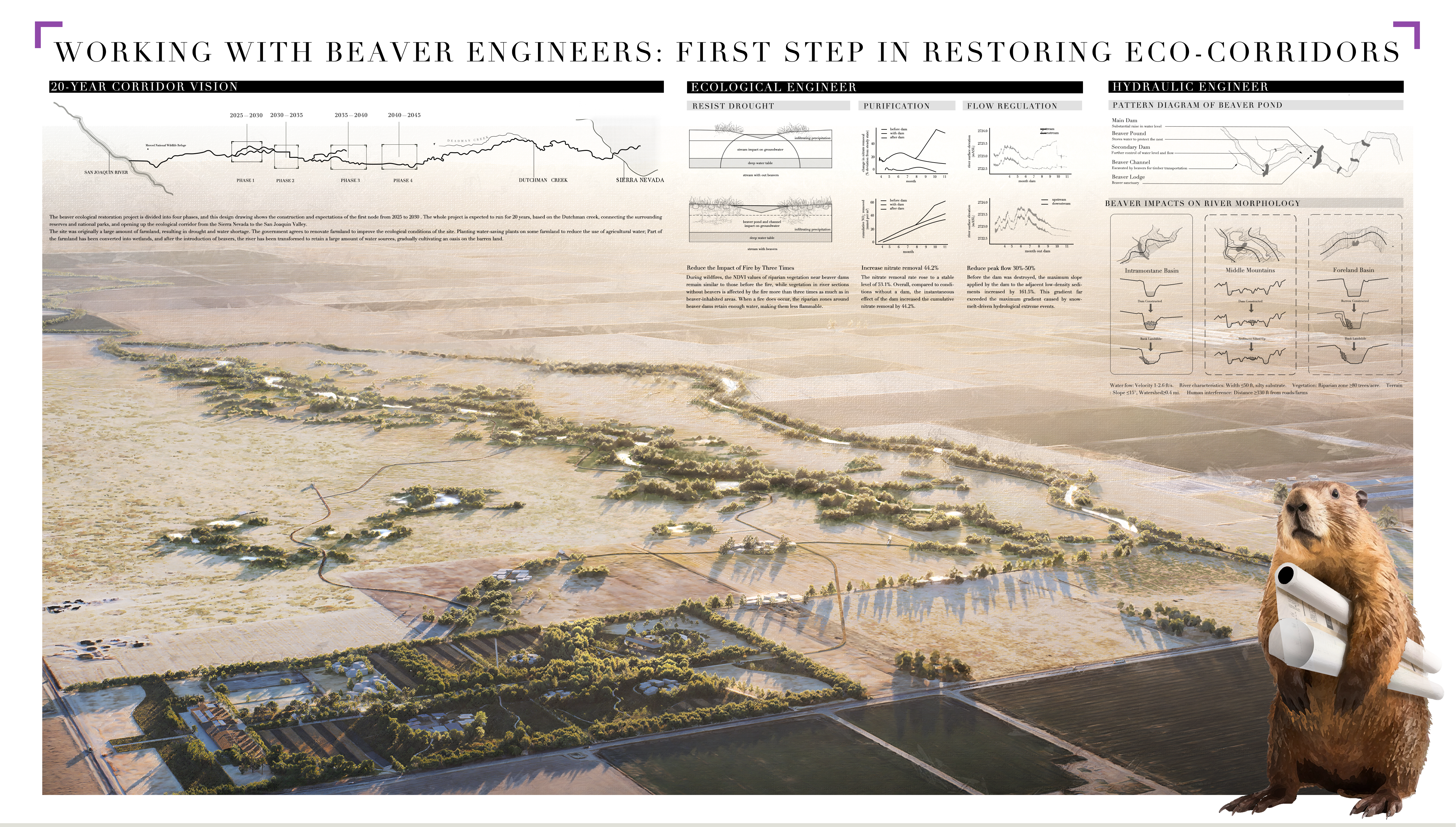
Working with Beaver Engineers: First Step in Restoring Eco-Corridors
Landscape design
Beijing Forestry University
California’s Central Valley exemplifies the ecological consequences of intensive agriculture and groundwater overextraction, with water tables dropping over 10 meters in less than a century. To address growing groundwater deficits, nearly 900,000 acres in the San Joaquin Valley may need to be fallowed by 2040. In response, California has launched a “multi-benefit land repurposing” strategy to transition farmland toward more water-resilient uses.
Our team proposes a novel restoration approach: leveraging “natural intelligence” embodied by the North American beaver (Castor canadensis), rather than substituting nature with technological complexity. Beavers, as ecosystem engineers, instinctively build dams, retain water, and reshape habitats—functions refined over millennia that act as a form of natural algorithm. Their behaviors enhance water quality, restore wetlands, and support biodiversity.
Using the Beaver Restoration Assessment Tool (BRAT), we identified optimal sites in the Dutch Slough watershed—an ecological corridor between the Sierra Nevada and Merced National Wildlife Refuge. Initial interventions include planting willow cuttings and constructing Beaver Dam Analogues (BDAs) to simulate early-stage beaver dams and create favorable hydrological and vegetative conditions.
The goal is to attract and reestablish beaver populations, whose ongoing activity will maintain dynamic, adaptive dam systems. These living infrastructures can outperform artificial ones in retaining floods, recharging aquifers, and restoring habitat networks—initiating a self-sustaining, resilient ecological cycle driven by nature itself.
